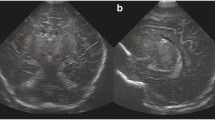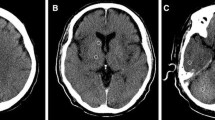Abstract
We describe the findings on single-photon emission computed tomography (SPECT) in patients with perinatal asphyxia at term, with perirolandic cortico-subcortical changes on MRI, and to correlate them with clinical features. SPECT of 7 patients was obtained after injection of 185–370 MBq of Tc-99m-ECD (ethyl cysteinate dimer). The patients had spastic quadriplegia (7/7) with perinatal asphyxia (6/7) at term (7/7). The results were correlated with the MRI findings. Hypoperfusion of the perirolandic cortex was clearly seen on SPECT in all patients, even in two with subtle changes on MRI. SPECT demonstrated a more extensive area of involvement than MRI, notably in the cerebellum (in 4), the thalamus (in 7) and basal ganglia (in 5), where MRI failed to show any abnormalities.
Similar content being viewed by others
Author information
Authors and Affiliations
Additional information
Received: 5 October 1999/Accepted: 11 November 1999
Rights and permissions
About this article
Cite this article
Yoon, C., Ryu, Y., Kim, D. et al. Perirolandic hypoperfusion on single-photon emission computed tomography in term infants with perinatal asphyxia: comparison with MRI and clinical findings. Neuroradiology 42, 908–912 (2000). https://doi.org/10.1007/s002340000357
Issue Date:
DOI: https://doi.org/10.1007/s002340000357




